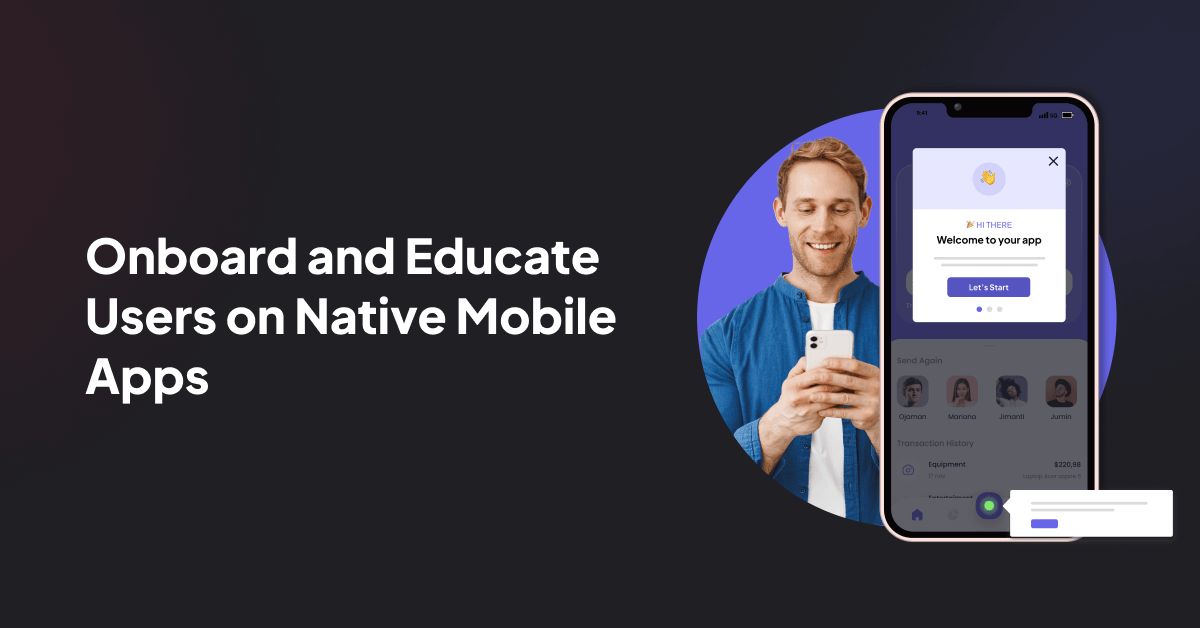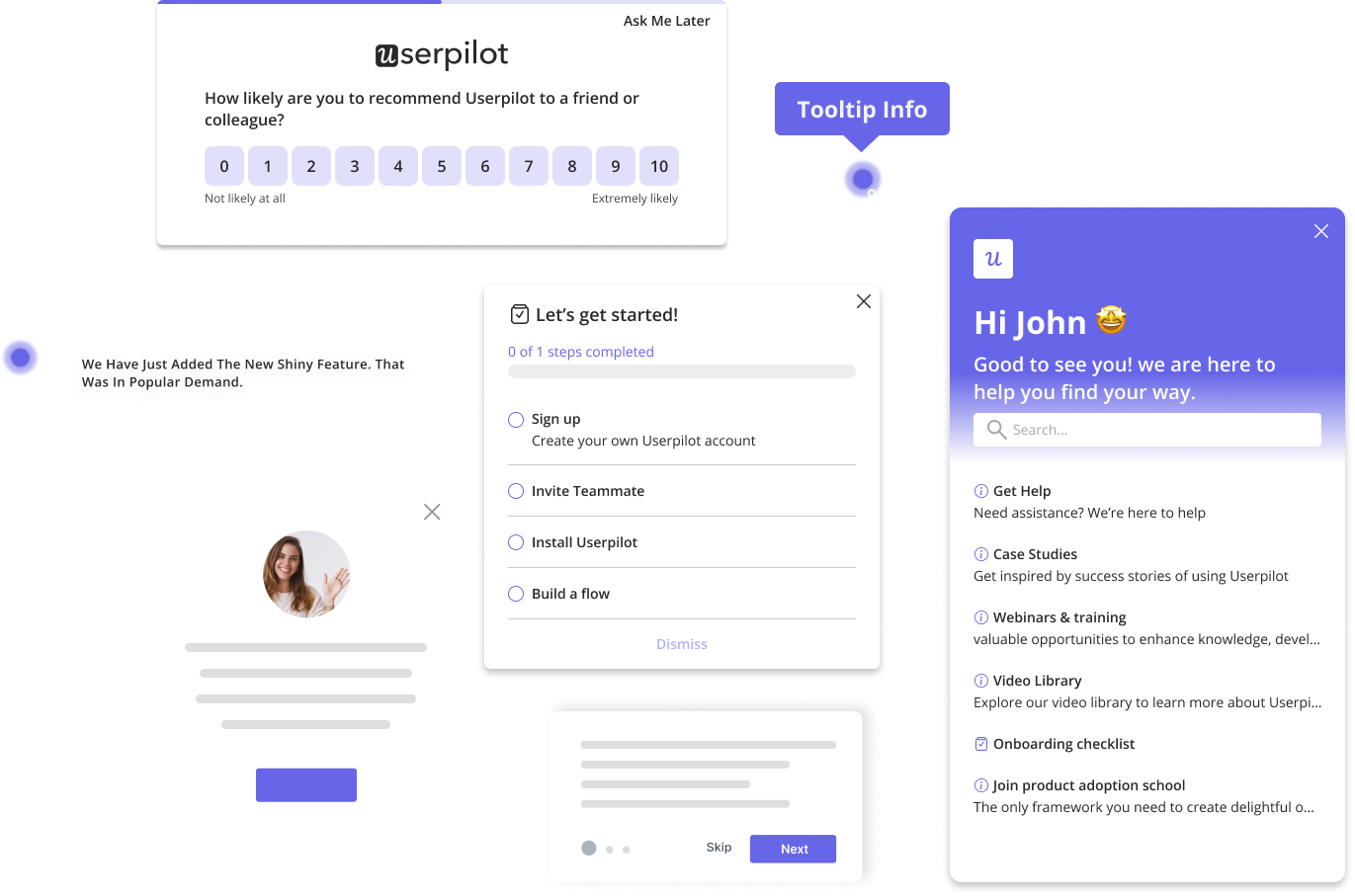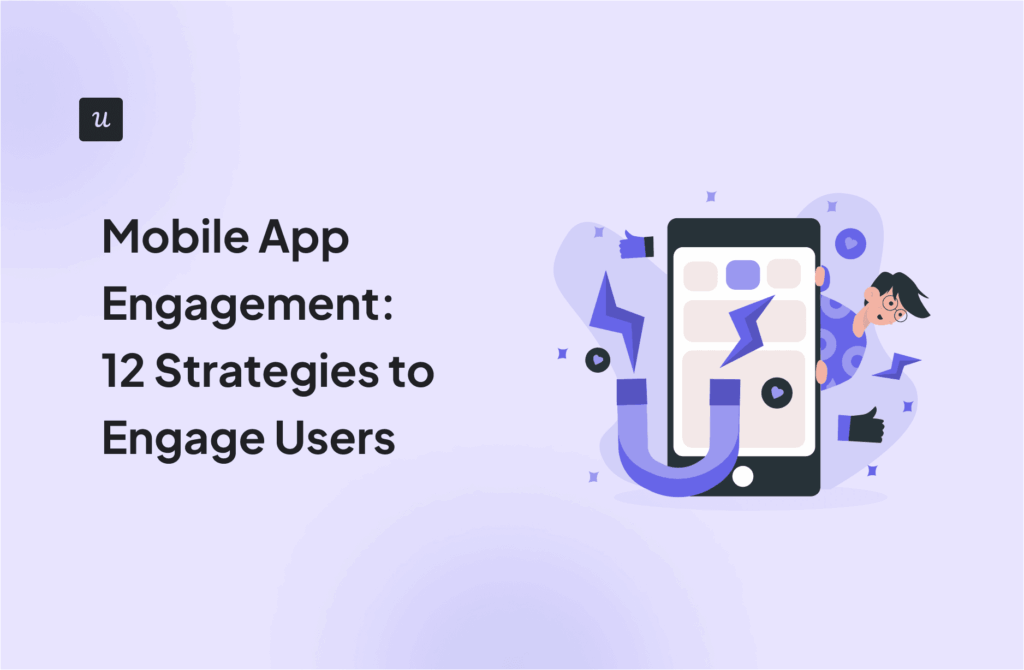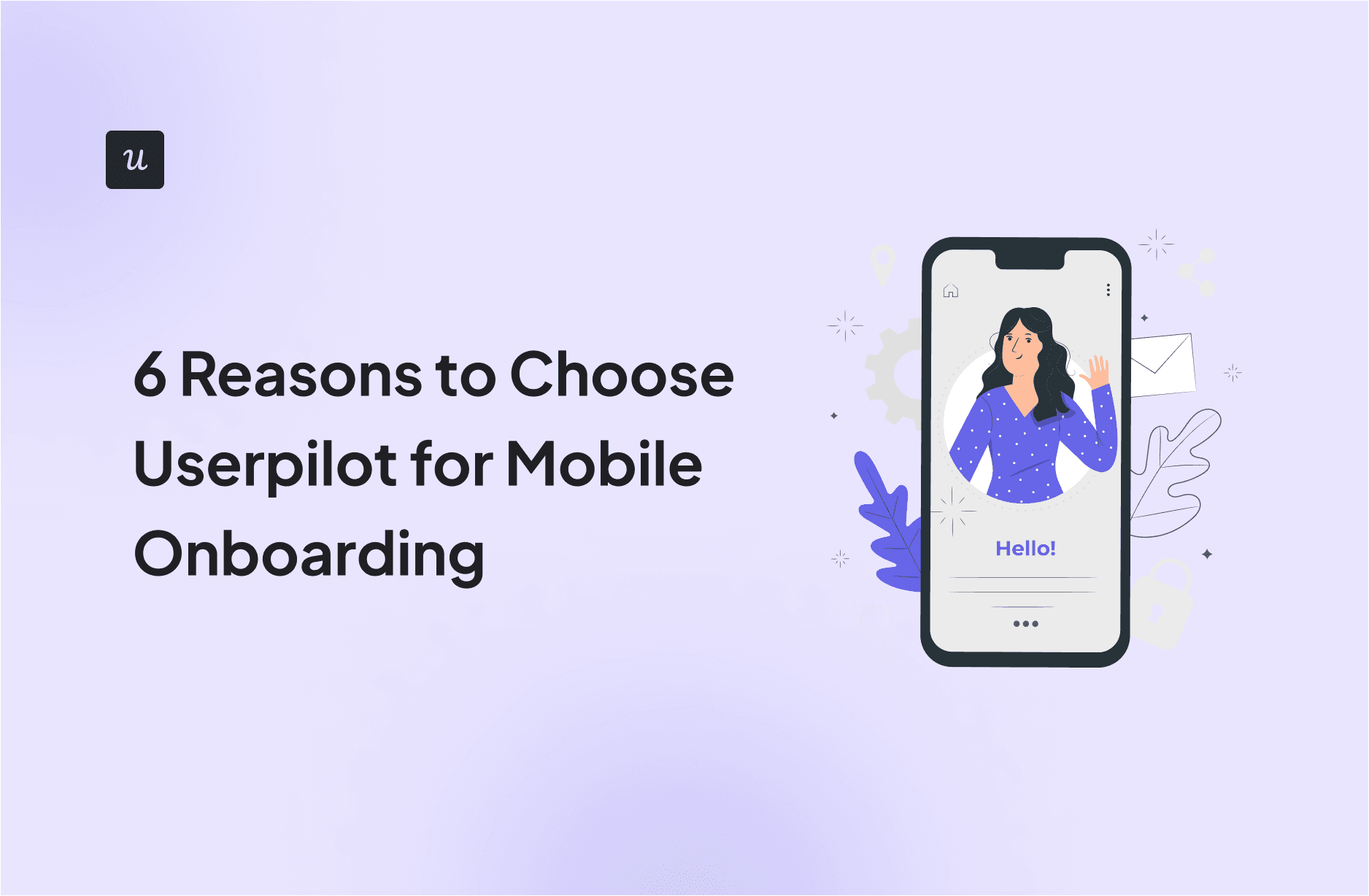
A great user onboarding experience shouldn’t stop at your web app. Your mobile users need just as much support and probably have even less patience to figure things out on their own.
With Userpilot’s mobile onboarding, you can create native-feeling in-app experiences that are quick to launch and don’t need developer handoffs. In this guide, we’ll explore how it works, what sets it apart, and why it could be the right fit for your onboarding strategy.
How are you currently tracking user behavior across both your web and mobile apps?
When you need to add a new tooltip or in-app guide, what’s the typical process?
How do you currently gather feedback from your mobile users to improve their experience?
Ready to see the best reasons to choose Userpilot for mobile onboarding?
Userpilot offers a no-code, all-in-one solution. With unified analytics, codeless UI patterns, and built-in feedback tools, you can improve activation and adoption without relying on developers.
Try Userpilot Now
See Why 1,000+ Teams Choose Userpilot
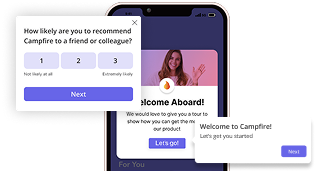
Userpilot for mobile onboarding
Userpilot helps you manage both web and mobile onboarding in one place, with no code required. You can build onboarding carousels, push notifications, in-app messages, and surveys from a single dashboard. Everything’s optimized for mobile, so your onboarding experience feels native from the start.
Cross-platform analytics are included by default, which gives you a full view of how new users progress, where they drop off, and how to improve activation. You can track the entire onboarding process without switching tools or dealing with fragmented data.
Mobile onboarding is available as an add-on starting with the Growth plan. Setup is fast and straightforward, so your team can start building fast without waiting on engineering.
Why choose Userpilot for mobile onboarding?
User onboarding on mobile doesn’t need to be complex or code-heavy. With Userpilot, you can support new users, drive product adoption, and improve the user experience, all from a single platform.
Whether you’re building user onboarding screens, push notifications, or collecting user feedback, everything is built to work together. That means no juggling multiple tools or trying to piece together scattered data.
And with cross-platform analytics, you get a clear view of how users progress (from sign-up to feature adoption) on both the web and mobile.
Here’s a closer look at what Userpilot offers:
1. Userpilot is an all-in-one platform for web and mobile engagement
Userpilot brings together product tours, in-app guidance, surveys, push notifications, and product analytics in one tool.
That means less time switching tools and more time improving the user onboarding experience. You can support new users across platforms without rebuilding your workflows for each. It’s all centralized, making it easier to stay consistent and scale your user onboarding process as your product grows.
2. Userpilot offers cross-platform analytics for unified behavior tracking
Tracking how users move between your web and mobile apps can get messy. Userpilot gives you unified analytics across mobile and web so you can track the entire onboarding process in one place.
See how users move through onboarding steps, monitor feature adoption, and identify where drop-offs happen. With all your data in one dashboard, you can measure what’s working and where to improve, without relying on third-party analytics or custom event tracking setups.
3. Create tailored in-app messages and push notifications with ease
You can prompt users with the right message at the right time without waiting on the dev team!
Userpilot lets you build in-app messages and mobile push notifications using different UI patterns that are optimized for mobile.
Messages can be personalized based on language, behavior, or user segments, so they feel more relevant and less disruptive.
4. Collect real-time user feedback directly on mobile
Userpilot helps you gather user feedback at the right moments, like after a feature is used or when a certain step is complete.
You can trigger short in-app surveys that feel native to your app experience. Or, run welcome surveys to understand new users’ goals, collect NPS or CSAT scores, or ask follow-up questions to learn how users experience your product.
This helps your team learn faster, iterate better, and keep improving the user onboarding journey.
5. Use Userpilot on any type of mobile app
Whether your product is built on iOS or Android, Userpilot’s SDK integrates easily without slowing you down.
Once it’s installed, your team can start adding tooltips, checklists, interactive walkthroughs, and surveys without looping in engineers every time you need to make a change. The setup is lightweight, flexible, and designed to support any mobile app.
6. A unified tool for your product team
Userpilot is designed for cross-functional teams who want more control over the user onboarding experience:
- Product managers can design and improve user onboarding flows, track user activation, and test variations.
- Designers can customize UI patterns to fit the app’s look and feel.
- Customer success teams can reduce support volume using contextual tooltips, helpful tips, and self-service support.
- Growth teams can run experiments, test messages, prompt feature adoption, and track performance.
Everyone works from the same tool, which means fewer handoffs, more visibility, and a better experience for your customers.
Userpilot’s key features for mobile onboarding
Userpilot gives you all the tools you need to support new users on mobile without the need for any clunky workarounds.
Everything is built with mobile in mind: flexible UI patterns, built-in user feedback tools, and no-code customization options to help you build fast and improve as you go.
Let’s explore some key, mobile-optimized features that make that possible:
Mobile carousels
Mobile carousels are a simple, effective way to guide new users through your app without overwhelming them.
With Userpilot, you can create mobile-optimized carousels that introduce one feature at a time, explain key steps in a workflow, or walk users through an empty state.
Each carousel is fully customizable (from design to targeting), so you can adapt the flow to different user segments. They’re especially useful for onboarding new users who are still finding their way around the app and benefit from a clear, guided flow.
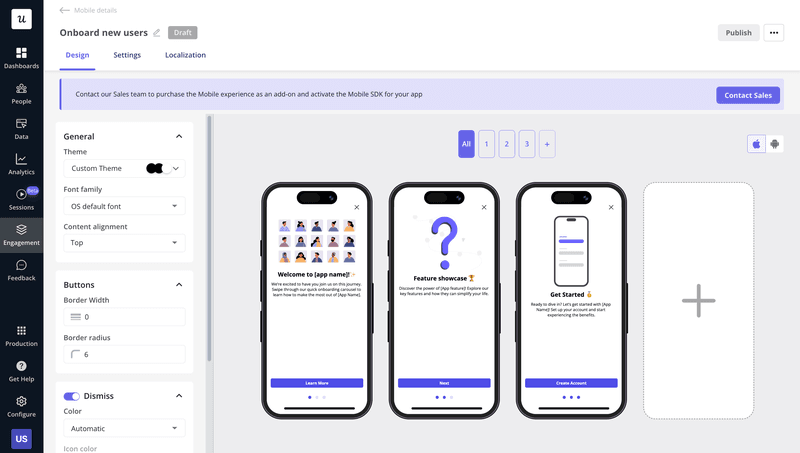
Mobile slideouts
Slideouts let you share useful tips, product updates, or onboarding guidance without interrupting the user experience.
With Userpilot, you can trigger slideouts based on specific actions or screen views, like when a user reaches a milestone or lingers on a complex page.
They’re ideal for nudging users forward, showing useful tips, or pointing them to an easily accessible resource center. Slideouts can also include contextual tooltips or links to support content, helping users explore the product in a more self-guided, non-intrusive way.
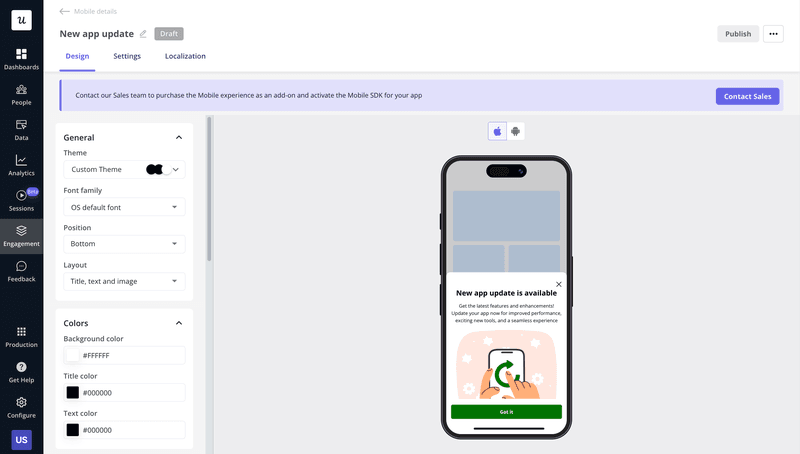
Mobile surveys
Userpilot’s mobile surveys make it easy to collect user feedback directly inside your app, at the exact moment it matters.
You can trigger short surveys after a user finishes a task, reaches a milestone, or completes the onboarding. Use them to run welcome surveys, capture NPS or CSAT scores, or better understand what your new users need.
Surveys are fully customizable, so you can adjust the timing, design copy, and targeting to match different user segments. This gives you more targeted information about how your onboarding is working, and where it might need improvement.
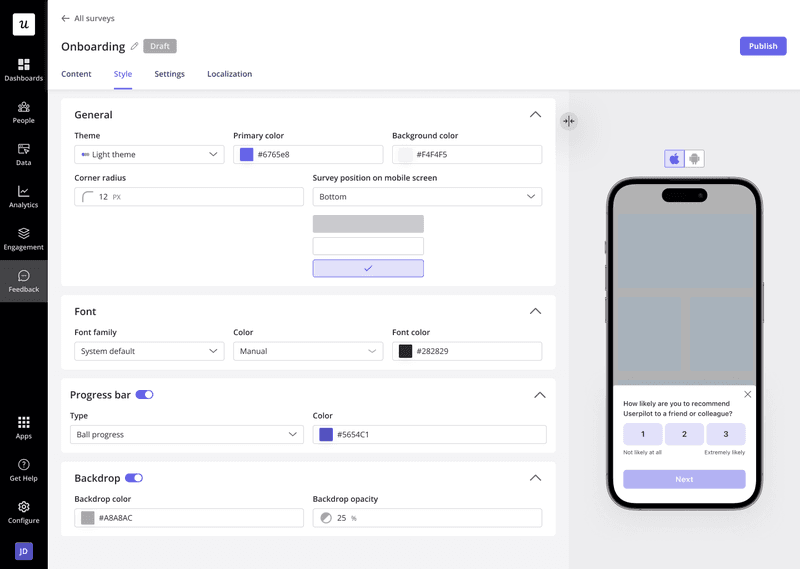
Mobile push notifications
Push notifications help you bring users back into the product and keep them engaged beyond the first session.
With Userpilot, you can create and send targeted notifications based on events, inactivity, or key actions, like skipping a task or reaching a milestone. You’re not just reminding users to return; you’re nudging them toward specific features, reinforcing value, and supporting user activation.
It all runs from the same platform where you manage onboarding, so there’s no need for extra tools or complex workflows.
This makes it easier to support account expansion, encourage users to explore more features, and reduce drop-off after the initial session.
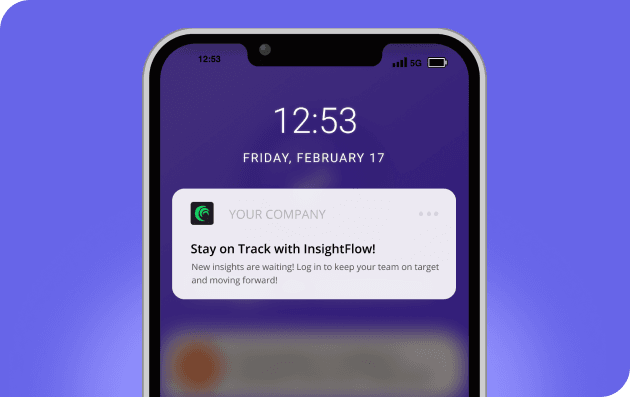
Advanced segmentation and localization
Userpilot makes it easy to tailor onboarding based on who your users are, what they need, and where they are in their journey.
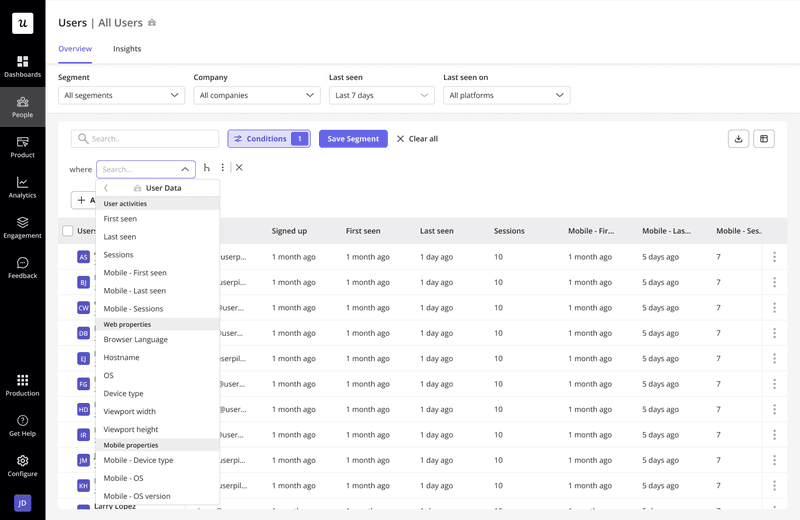
You can build dynamic segments using properties like device type, app version, language, or in-app behavior. Then, show different flows, prompts, or content based on those segments.
So you might highlight key features for new users while showing tailored nudges to those coming back after a break.
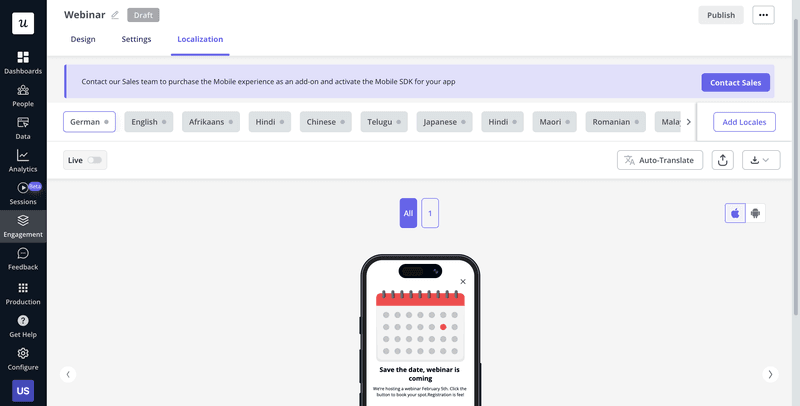
Also, localization is built-in, so you can customize user onboarding flows for different regions without maintaining separate versions. This helps make your onboarding much more accessible, especially for global apps that serve diverse user bases.
Mobile analytics
Understanding how users interact with your onboarding experiences is key to improving them. Userpilot’s analytics make this easier.
You can track how users move through each step of your onboarding flow, which UI patterns drive the most engagement, and where people tend to drop off. You can also track feature usage, completed tasks, and survey responses to spot patterns in behavior and fine-tune the experience.
All this data is accessible from a single dashboard alongside your web product analytics. That way, your team has a full picture of user behavior across platforms. It makes it easier to test onboarding practices, improve the experience, and support product growth with clearer insights.
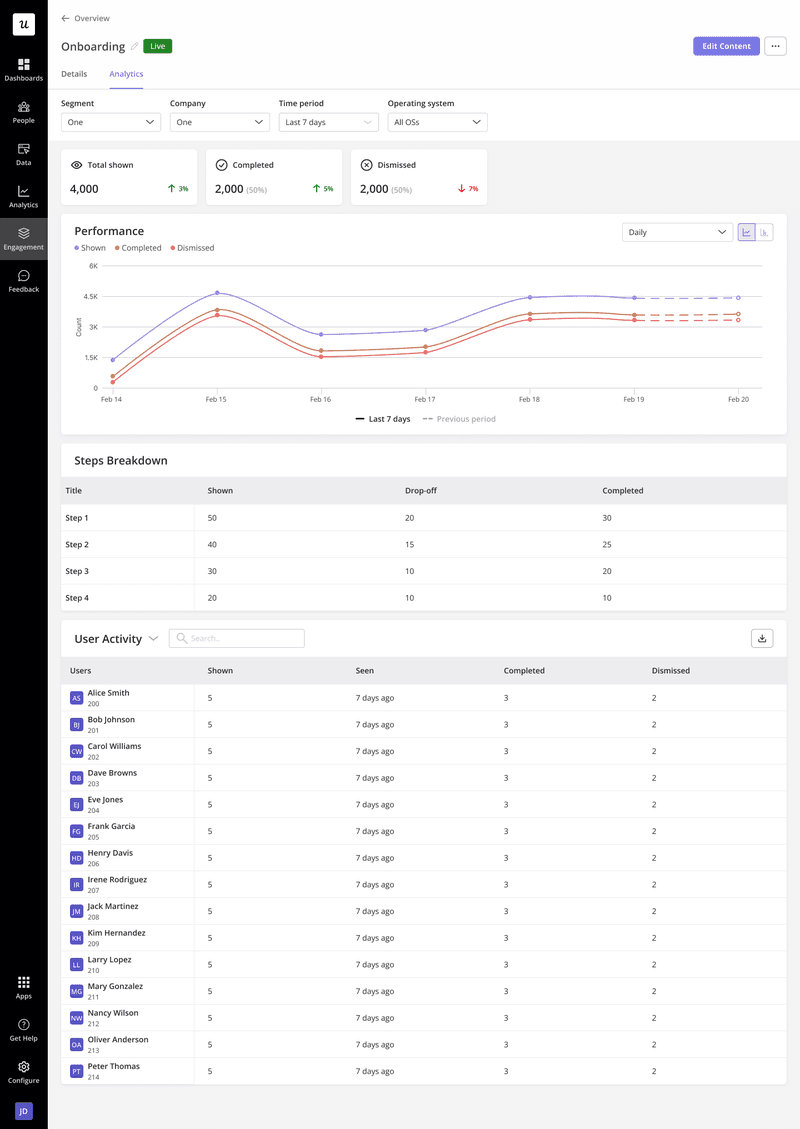
Market alternatives for mobile onboarding
There are plenty of onboarding tools that offer mobile support, such as Pendo, Appcues, Intercom, Whatfix, and WalkMe.
But most of them only cover part of the job. Some lack mobile-specific UI patterns, and others lack built-in survey tools or require a technical setup that slows teams down.
For example, Appcues lacks NPS and Pendo push notifications. Intercom lacks analytics, Whatfix requires separate content flows, and WalkMe demands coding skills to get the most value.
How does Userpilot stand out? Here’s a quick look:
- Optimized mobile UI: Unlike most tools that reuse web components, Userpilot supports mobile-specific patterns out of the box.
- Built-in user feedback tools: NPS, CSAT, and CES surveys are available natively.
- Cross-platform analytics: Track the entire onboarding process across mobile and web in one place.
- Easy to set up: Built for non-technical teams, with minimal reliance on developers.
If you’re searching for a more flexible, scalable user onboarding tool, Userpilot helps you onboard users, encourage adoption, and scale with fewer resources. It’s a productive way to improve onboarding without sacrificing user experience or team efficiency.
Why Userpilot is the best choice for mobile onboarding
Userpilot is built to simplify mobile onboarding without compromising on flexibility or power. As an all-in-one platform, it brings together everything you need: mobile-specific UI patterns, in-app messaging, user feedback, and unified analytics that cover both web and mobile.
You can build personalized onboarding based on behavior, segments, or language, and roll out changes quickly without needing to touch code. It’s designed to be easy to use, whether you’re in product, growth, or customer success.
If you’d like to see how it fits into your workflow, book a Userpilot demo to explore it firsthand.
FAQ
What is the mobile app onboarding process?
Mobile onboarding is the process of introducing new users to your app in a way that helps them understand its value quickly. It usually includes in-app guidance, onboarding checklists, and interactive flows that explain key features and guide users toward early success. A good user onboarding experience should reduce the learning curve and give users the confidence to explore on their own.
How much does Userpilot cost?
Userpilot’s pricing is based on your monthly active users and the plan you choose. Mobile onboarding is available as an add-on starting with the Growth plan. For tailored pricing based on your app’s needs, it’s best to request a quote directly through the website.
Which app has the best onboarding process?
There’s no one-size-fits-all answer, but the best onboarding examples often include a mix of personalized prompts, self-service support, and clear UI patterns. What matters most is giving users a smooth experience that highlights core features and adapts to where the user is in their journey.
Which tool is used for customer onboarding?
Many SaaS companies use tools like Userpilot to onboard customers. These tools help create different UI patterns, collect user feedback, and deliver in-app guidance, all without needing developers for every change. It’s a faster way to improve user onboarding and deliver a better overall user experience.

